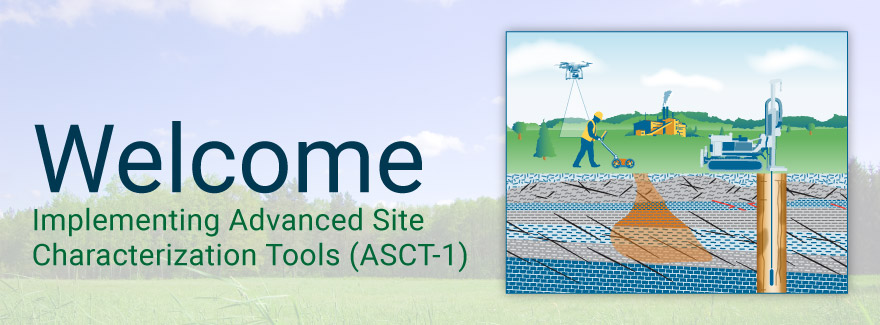
Advanced Site Characterization Tools (ASCT) in this document are organized into four sections: Section 3 – Direct Sensing, Section 4 – Borehole Geophysical, Section 5 – Surface Geophysical, and Section 6 – Remote Sensing. For each tool within these sections, the document provides a discussion of:
- the information the tool provides,
- how it works,
- advantages and limitations of the tool,
- quality assurance/quality control considerations,
- data collection design,
- data interpretation and presentation, and
- cost considerations
An ASCT Selection Tool, along with Summary Tables, Case Studies, and Checklists are included with this document to support the selection and use of these tools.
The ASCT Selection Tool provides an interactive dataset to identify appropriate tools for collecting geologic, hydrologic, and chemical data. It can be accessed using the Selection Tool icon on the icon bar that is available at the top of each page. By selecting four general criteria about a site, the ASCT Selection Tool provides a list of ASCT that may be appropriate to collect the needed data. Prospective tools can be further evaluated using the discussions of the tool provided in the tool section of the document and the:
- Summary Tables that provide additional information to evaluate the applicability of each tool,
- Case Studies that provide examples of the use of the tools at a site, and
- Checklists that provide information to be considered when planning to use a tool, describe typical content of a report, and identify appropriate quality control checks.
These can be accessed using the icons on the icon bar or from links within the ASCT Selection Tool. Training Videos are also available to provide an overview of the ASCT document and example application of select tools. These can be accessed using the icon on the icon bar.
Published by the Interstate Technology & Regulatory Council, December 2019Click here to download the entire document.


